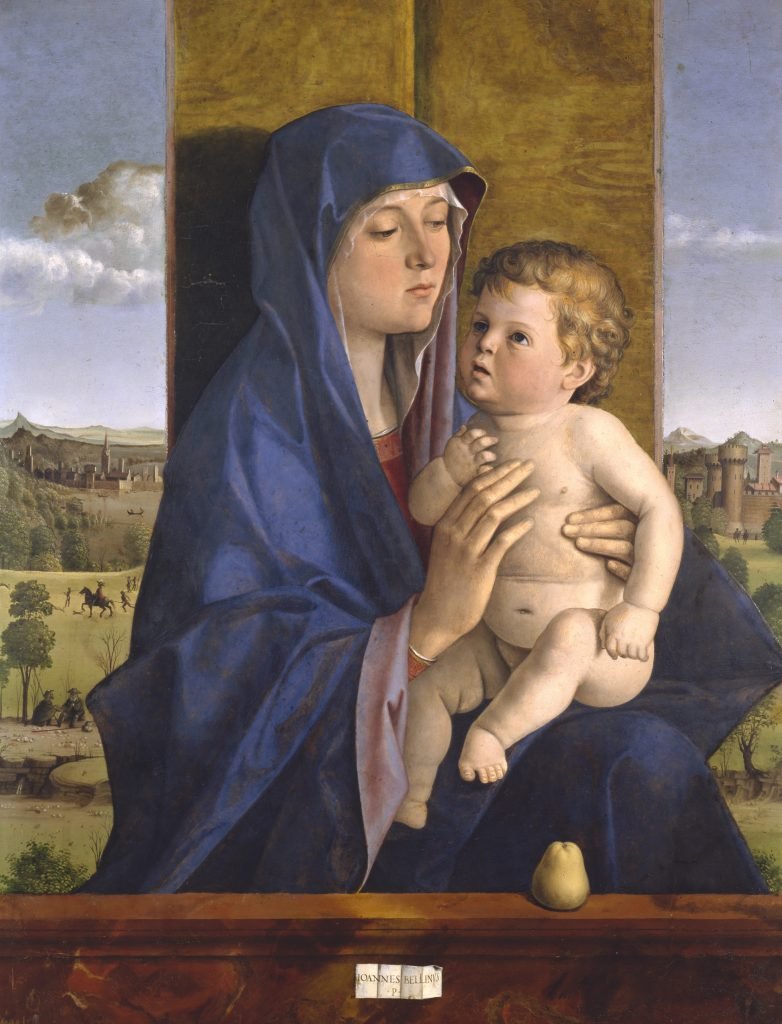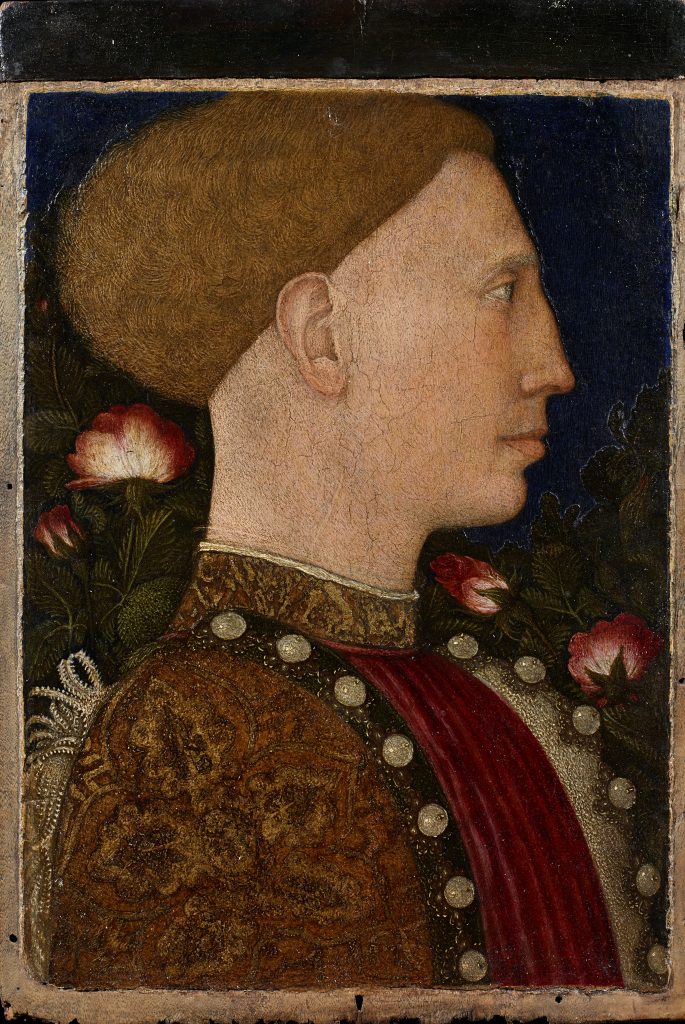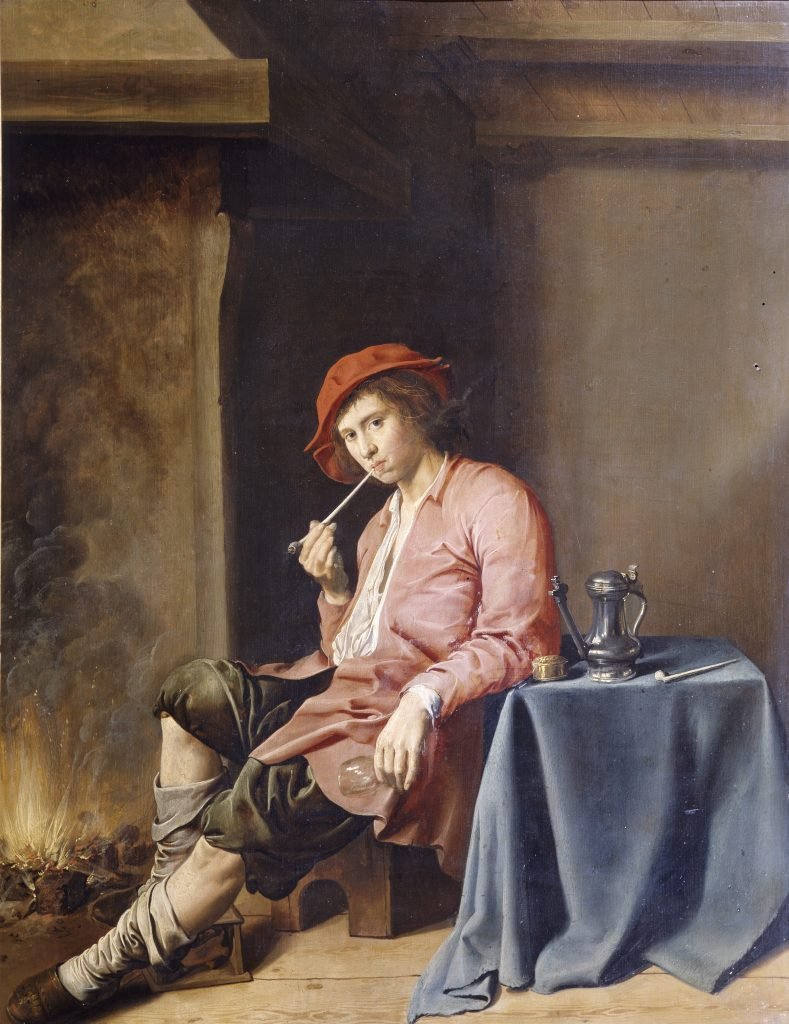Giovanni Morelli, the dark connoisseur
Art critic and politician Giovanni Morelli played a key role in the history of art. Here is an honest portrait of him shading some light on his dark side.
The renowned attributive method by Giovanni Morelli marks the invention of modern connoisseurship. His cosmopolitan life allows him to get in touch with a huge number of artworks. Indeed, the majority of his remarks on Renaissance paintings still hold true today. Yet Morelli used to describe art as “a late and minor experience”. First and foremost, he considers himself “a politician whose life was spent tirelessly working for his Country”.
In point of fact, art and politics intertwine in Giovanni Morelli’s life at a very early stage. They are closely connected in his patriotic standpoint that since the 1850s had been advocating new forms of safeguarding and promotion of the Italian artistic heritage.

Birth, Education, Science
Joahness Morell – he would later in life italianate his name – was born on 25th February 1816 in Verona. Both his parents come from Swiss Protestant families which had moved to Italy. When he is 9 years old Johannes moves to Bergamo with his mother, after his father had passed away.
He studied for the most part in Germany. Besides Italian, the young Morelli perfectly speaks and writes also French and German, has a wide knowledge of classical languages and he also applies himself to Sanskrit. However, his studies are not oriented towards humanities; on the contrary he is interested in science. In 1836 he graduates in medicine from the Ludwig-Maximilians-Universitat of Munich. Despite never practising as a doctor, Giovanni Morelli will cultivate his interest in comparative anatomy through his life, both from a scientific perspective and as a resource for his attributive method.
Particularly crucial in Morelli’s training will be the lessons by Geroges Cuvier, a great French expert on comparative anatomy. Equally important will be discovering Charles Darwin and his theory of evolution. The British naturalist’s observations on the “correlation between insignificant and recurrent details” in the animal anatomy will play a significant role in the development of Giovanni Morelli’s attributive system for the artworks. His comparative method takes into account certain minor details that however recurs in the production of an artist: “mechanical mannerism” typical of every author (like hands, ears, characters’ hair) and thus able to “scientifically” prove his identity. During his formative years Giovanni Morelli also meets art historians like Carl Friedrich von Rumohr, Gustav Friedrich Waagen and Otto Mündler.
Culture, fight, politics
Giovanni Morelli returns to Italy in 1840. That year he officially changed his name to Giovanni Giacomo Lorenzo Morelli. His literary ambition leads him to Florence – he tries his hand at writing plays though the outcomes are rather arguable. There he meets the writer Gino Capponi, the playwright Giovan Battista Niccolini, the jurist Giovanni Battista Giorgini, the editor and writer Giovan Pietro Vieusseux and the poet Giuseppe Giusti. As a matter of fact, he goes to Florence above all on a mission to study Tuscan dialect as a model which the linguistic unification of Italy could be founded on. This matter was also very dear to other friends of his: Francesco De Sanctis and Alessandro Manzoni, the godfathers of modern Italian. Later on however Giovanni Morelli’s concern will shift to the Italian cultural heritage and how to collect it into new museums which would then become expressions of the national identity.
In 1844 Giovanni Morelli buys a property in San Fermo, Brianza, possibly to escape the provincial middle-class environment of Bergamo. The property is strategically located for travelling around, not too far from Milan, Como and Bergamo. Besides local idiosyncrasies, however, what is getting more and more unbearable was indeed the Austrians ruling over Lombardy-Venetia. The young Morelli feels the urge to take an active part in the Revolution of 1848. He puts his life at risk in the three Italian Wars of Independence, from 1848 to 1866, pursuing the ideals of the creation of a new democratic state. Over the years the strong passion he has for politics will also lead him to play an active role in the Parliament. He is elected four times as a Member of the Parliament of the Kingdom of Sardinia, and in that of the newly unified Kingdom of Italy. In 1873 he will be appointed senator for life.


Art as common identity: the Poldi Pezzoli collection
In the 1850s Giovanni Morelli realises that the political aim of liberation from foreign domination ought to be connected to a new valorisation of the Italian cultural heritage. Specifically, the art critic begins to develop the idea of delineating, within a larger project, the history of the various regional schools of art. This process of cataloguing will be carried out extensively and with great care, starting from 1866. To work on this project he will even decline the offer to become director of the Uffizi in Florence. It is also in the 1850s that Giovanni Morelli begins to systematically purchase paintings, initially from private collections in Bergamo, then from other cities in Italy and Europe, to create his own personal collection. He will also buy on behalf of friends.
Amongst the first works he buys there is a Lorenzo Lotto that he acquires from the a heirs of the Bishop of Bergamo for 362,5 Lire (about the cost of a yearly subscription at La Scala in Milan). In February 1856 – as noted in his ledger – he asks a carpenter to build some crates to transport artworks, as he likes to carry along some of the paintings during the long trips he embarks on, amongst which there is often a Madonna with child by Mantegna.
There are several works that Giovanni Morelli sells to friends and acquaintances, such as Francesco De Sanctis, Federico Frizzoni, Emilio Visconti Venosta, Ludovico Barbiano di Belgiojoso d’Este and above all to the patriot and Lombard collector Gian Giacomo Poldi Pezzoli, that he has probably met through restorer Giuseppe Molteni. Giovanni Morelli sells Poldi Pezzoli five important Renaissance paintings he had owned since 1856, including the above mentioned Mantegna (here is a ink to our in depth writing about Gian Giacomo Poldi Pezzoli).
The ideas of the Risorgimento also surround the drives towards private collecting. Morelli is interested in conveying to Poldi Pezzoli his project to gather an important collection of 15th and 16th century paintings that would be able to represent the extraordinary tradition of Italian Renaissance art. This has a particularly strong symbolic meaning as the country is under Austrian domination. The Poldi Pezzoli collection was born in the 1850s also following this drive.

The importance of restoration
Giovanni Morelli promotes a scientific approach to restoration which shouldn’t expose artworks to ‘modernisation’ or to any sort of personal additions by restorers. He deals with the topic of restoration also in the first major text he publishes under the pseudonym Ivan Lermolieff (the writing is titled The Works of Italian masters in the galleries of Munich, Dresden and Berlin). Here restoration is regarded as a tool that could be used in the attribution of the artworks: through the analysis of the original painting – according to the connoisseur – you could identify his author. However, if the painting is subject to a bad restoration, original traces may be altered or deleted thus preventing the correct attribution of the artwork. Well in advance Giovanni Morelli believes that conservation shouldn’t be entrusted to artists but to restoration specialists. In this regard he has clear ideas since the 1860s as proved by his fundamental contribution to the manual on restoration by Secco Suardo, which was first published in 1866 (a revised version is still in print, titled Il restauratore di dipinti).
The works at the Accademia Carrara in Bergamo
In 1866 Giovanni Morelli introduces his cousin Giovanni Melli to collecting and he helps him to create a valuable collection. For instance, he suggests him to acquire one of the most important Madonna with child by Giovanni Bellini. He is also directly involved in the purchases and he often buys works on behalf of the cousin. He rarely goes to antique dealers; he makes significant acquisitions at Roman pawn shop, the Monte di Pietà instead. There he buys in 1871 the History of Virginia Romana by Botticelli. The subject is described as ‘horsemen and a rape of nuns’. Morelly immediately associates the work to the one that Vasari briefly described being in the palace of Giovanni Vespucci, in Florence, and at once recognises its great value. The art critic also buys works for himself; he goes both for masterpieces (such as the Ritratto di Leonello d’Este by Pisanello, bought in London) and paintings by secondary artists, that however he likes and are often intended for home decoration, amongst which there is a Murillo.


After Melli’s death (1874), Morelli inherits his entire collection, which he will then bequeath, together with his own, to the Accademia Carrara in Bergamo, where it is still exhibited today (the museum preserves 117 paintings and 3 sculptures). It includes superb works by renowned artists such as Ambrogio de Predis, Botticelli, Bergognone, Molenaer. The works are arranged in 1892 by Gustavo Frizzoni, pupil and close friend to Morelli. However, when the collection is donated, Morelli has already selected the best paintings in terms of quality and importance: he is indeed aware that the artworks would be exhibited together with the ones he had personally suggested to the museum, and close to the worthy collection by major art expert Guglielmo Lochis.
The writings and the only speech
Giovanni Morelli dies on February 28th 1891 in Milan. Besides many friends, he also leaves some enemies both in the art (first and foremost Wilhelm von Bode) and political fields. Some of Giovanni Morelli’s ideas weren’t shared by his companions, like his being in favour of death penalty, being against expanding the voting population and the freedom of the press.
Amongst his written legacy, two main works are to be pinpointed: The Works of Italian masters in the galleries of Munich, Dresden and Berlin (first Italian edition was printed in Bologna in 1886, translated from the original German version which was published in Leipzig in 1880) and Italian Painters: The Borghese and Doria-Pamphili Galleries in Rome (Milan 1897, edited by Gustavo Frizzoni: translated from Leipzig edition of 1890).
Of the many speeches given in Parliament there is only one left. It is a passionate speech Giovanni Morelli gives on July 19th 1862. While expressing his concern for the royal collections of the Savoy which, in his opinion, were in danger due to poor conservation measures, Giovanni Morelli widens his focus to the Italian cultural heritage as a whole, particularly stressing the topic of the export of artworks.
Ed ora, semprechè la Camera me lo permetta, non vorrei lasciare sfuggire questa occasione per chiamare l’attenzione, la seria attenzione di essa sopra un argomento che mi sembra di grandissima importanza, nè a voi certo potrà parere futile, e del quale pur troppo fino ad oggi i rappresentanti d’Italia, di questa terra consacrata dal cielo alle arti belle, non trovarono mai tempo di occuparsene; intendo dire dello stato di abbandono in cui giacciono i monumenti d’arte nella penisola. Signori, prima di tutto conviene dissipare una funesta illusione assai diffusa in Italia, cioè che anche fuori delle nostre pinacoteche, dovunque, in tutte le città, in tutti i borghi, in tutte le castella, non che nelle case dei privati, per non dire sopra ogni siepe, che per tutto in Italia si trovino disseminati dei tesori artistici. Pur troppo la cosa non istà più così. In questi ultimi quattro decenni l’Italia è stata spogliata di un grandissimo numero di insigni opere di arte, sia appartenenti a chiese e conventi, sia a privati. (…) Né gli stranieri si limitarono soltanto ad esportare dall’Italia quadri e statue, ma celebri affreschi di una intera cappella, e perfino un palazzo dovette emigrare in Inghilterra. Principi e duchi, conti e marchesi, prelati e canonici tutti da noi andarono a gara nel convertire le avite opere d’arte dei nostri grandi maestri in oro straniero. (…) Signori, se il nome italiano, anche nei tempi della maggior nostra decadenza e prostrazione nazionale, è stato sempre e dovunque rispettato; se ora la causa italiana trova in tutti i paesi civili sì care, e a noi sì proficue simpatie, egli è in gran parte perché sulle labbra di tutte le persone anche’mezzanamente eulte di quei paesi risuonano, simboli di poesia, i sacri nomi di Michelangelo, di Raffaello, del Correggio, di Palladio, eli Canova, e quando pensano all’Italia essi pensano essenzialmente al paese delle arti belle, alla cui pura e serena immagine svanisce ogni odio nazionale, ogni bassa e serena passione in chi ha il cuore ben fatto.
In his speech Morelli also explains the essential steps that should precede a radical reform of the law, and pleads for new funding needed to increase conservation interventions and improve the management. His speech however doesn’t quite have the desired effect. The Parliament, in that session, seems to have more important issues to tackle and votes in favour of new funds destined to military expenses, rather than to art.


Legacy and something to clarify
Giovanni Morelli’s method of attribution, so successful in the 19th and early 20th century, was partly set aside around 1950. It was criticised for being more related to the market than to an actual historical analysis. To this day the more empirical and intuitive method by Giovanni Battista Cavalcaselle (and then by Roberto Longhi) is actually favoured over Morelli’s ‘scientific’ one. The former attaches importance not only to single details but also and above all to the links between the artworks.
In the last decades of the past century, however, the Morellian method has been rediscovered especially by those scholars who deal with artworks made by anonymous artists, as in the cases of Classical archaeology or Asian art. There his method could be useful to rebuild the identity of the artists and catalogue their works. In 2017 the Morellian method was employed in rock art research in Australia.
Giovanni Morelli certainly plays a huge role in the history of art critic and of cultural heritage. What is left to clarify is possibly his relationship with the art market. Morelli as a patriot and protector of the valorisation of national patrimony, as a determined advocate of laws that would prevent the exportation of artworks at times clashes with Morelli as a connoisseur ready to dispense market advice and even to sell important italian artworks to foreign friends, like to Sir Charles Lock Eastlake and the following directors of the National Gallery in London. Further studies should aim at shedding some light on this far from being a secondary aspect of his life.
Bibliography
- La vita di Giovanni Morelli nell’Italia del Rinascimento, di Jaynie Anderson, Milano, 2019, Officina Libraria (anche nella versione inglese The life of Giovanni Morelli in Risorgimento Italy).
- Accademia Carrara Bergamo. Dipinti del Trecento e del Quattrocento. Catalogo completo, a cura di Giovanni Valagussa, Milano, 2018, Officina Libraria.
- Camera dei deputati, Portale storico, VIII Legislatura del Regno, 18 febbraio 1861 – 7 settembre 1865, https://storia.camera.it/#nav
November 25, 2020
